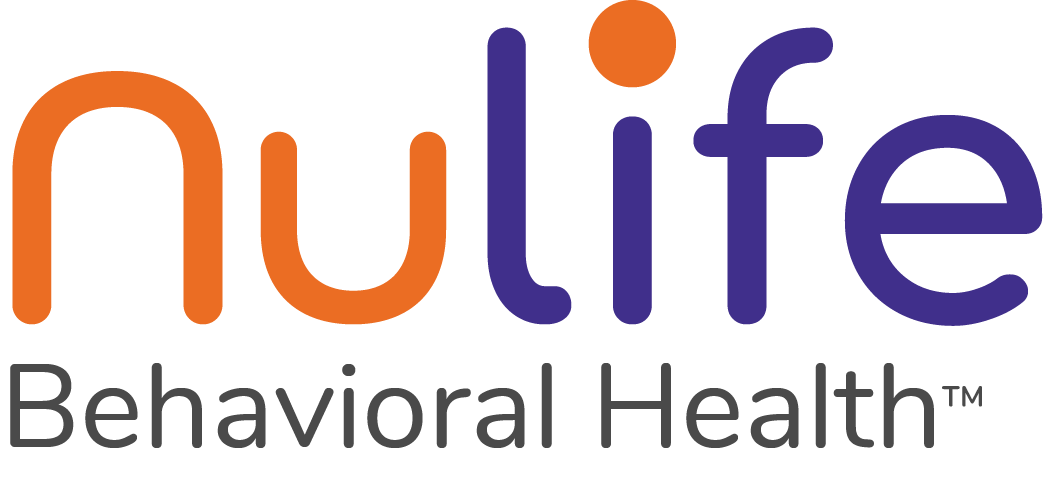
There are different types of anxiety disorders, each with different signs and symptoms. But first, what are anxiety disorders? An anxiety disorder is a mental health condition whose hallmarks include excessive, persistent feelings of worry, fear, and dread.
If you have an anxiety disorder, you may feel restless, have difficulty sleeping, have headaches or muscle aches, breathe faster, feel dizzy, and so forth. Anxiety disorders can get in the way of your daily activities, such as your job performance, schoolwork, and even relationships.
It is also possible to have more than one type of anxiety disorder. Some people may also have another mental health condition at the same time as anxiety, like depression. We will help you understand the types of anxiety disorders and their treatment options. If you or someone you know has anxiety, we can help you find support.
Types of Anxiety Disorders
According to the American Psychiatric Association, these are the most common types of anxiety disorders in the US.
Generalized Anxiety Disorder
Generalized anxiety disorder (GAD) is the most common type of anxiety disorder in the US. It involves constant feelings of anxiety or fear, which impair daily activities. People with GAD often fret about family, work, health, finances, or relationships. They also find it challenging to control their anxiety. Generalized anxiety disorder can last for months and sometimes years.
Symptoms of Generalized anxiety disorder
- Excessive worry about various aspects of life.
- Feeling restless and on edge
- Being easily fatigued
- Easily irritated
- Having difficulty concentrating
- Difficulty falling or staying asleep
- Having muscle aches, headaches, stomachaches, and other pains
Panic Disorder
People with panic disorder experience unexpected, recurrent panic attacks. These panic attacks make your heartbeat much faster. You feel sweaty and worry that something terrible is about to happen. People with panic attacks often fear losing control of themselves in public.
There’s often no specific trigger for panic attacks. They can occur several times a day or as rarely as a few times a year. Panic attacks may also may feel similar to a heart attack.
Symptoms of Panic Disorder
During a panic attack, you may experience:
- An intense episode of fear or panic
- A racing, pounding, or rapid heart rate
- Sweating
- Trembling, shivering, or chills
- Shortness of breath or feeling like you’re choking
- Chest pain
- Nausea or abdominal pains
- Dizziness or light-headed
- Numbness or tingling sensations in your fingers
- Fear of losing control
Agoraphobia
Agoraphobia is a type of anxiety disorder. A person with agoraphobia is afraid to go places that may cause panic or make him feel trapped and helpless. This disorder often co-occurs with panic disorder. In extreme cases, a person with agoraphobia may find it difficult to leave the house. They fear they might have a panic attack in public, so they prefer to stay inside.
Symptoms of Agoraphobia
If you have agoraphobia, you may experience fear of:
- Being in enclosed places such as elevators
- Places outside your house such as traveling, movie theaters, malls, etc.
- Using public transportation
- Being in crowded places
Social Anxiety Disorder
Social anxiety disorder is also called social phobia. It is an intense fear of social situations where people may scrutinize or judge one. People with social anxiety disorder don’t like social gatherings or interacting with people. They often blush, sweat, and tremble in any social situation.
Separation Anxiety Disorder
Children are not the only ones who suffer from separation anxiety disorder. Adults also suffer from it. Separation anxiety disorder involves excessive fear of being separated from your loved ones. A person with social anxiety disorder may worry about losing the person closest to them. They may refuse to go out or stay away from that person and may also be prone to nightmares.
Selective Mutism
Selective mutism is most often seen in little kids. Kids with this disorder usually refuse to speak despite being able to do so. They only speak in their homes around immediate family members and not in front of others. Selective mutism is often related to social anxiety. It usually occurs before the age of 5. In selective mutism, a child may feel shy, clingy, anxious, withdrawn, or temperamental.
Specific Phobia
Specific phobias occur when you feel irrationally terrified about a particular object or situation. The situation may not in any way be life-threatening or harmful.
Examples of specific phobias include:
- The fear of spiders — arachnophobia
- Fear of heights — acrophobia
- Fear of small spaces — Claustrophobia
- Fear of needles — trypanophobia
- Fear of open spaces — agoraphobia

Other Related Disorders and Unspecified Anxiety Disorders
Obsessive-Compulsive Disorder (OCD)
Obsessive-Compulsive Disorder involves unwelcome thoughts and fears that lead to repetitive behaviors performed to reduce anxiety. These behaviors can range from excessive hand washing to checking locks many times.
Post-Traumatic Stress Disorder (PTSD)
Post-Traumatic Stress Disorder develops after a person suffers a traumatic event. Symptoms include flashbacks, nightmares, and severe anxiety related to the traumatic incident.
Health Anxiety (Hypochondriasis)
People with health anxiety often worry about having a severe illness despite little or no medical evidence. They may visit doctors every time and become obsessed with their health.
Causes of Anxiety Disorder
Researchers have yet to discover the exact causes of anxiety disorder. However, a combination of risk factors plays a role. They include:
- Medical Conditions. Sometimes, we can link anxiety disorders to underlying medical conditions. Thyroid disorders, heart problems, or chronic pain can all trigger or worsen anxiety. Anxiety disorder can also arise from side effects of certain medications.
- Genetics. A person’s genetic inheritance plays a role in the development of anxiety disorders. If a close family member, such as a parent or sibling, has an anxiety disorder, you may be more vulnerable to them. But it doesn’t guarantee you’ll have an anxiety disorder.
- Brain Chemistry. The brain is a complex chemical factory. Sometimes, it can produce too much or too little of certain neurotransmitters like serotonin and dopamine. These chemicals play a crucial role in balancing mood and emotions. When they’re imbalanced, it can lead to anxiety.
- Trauma and Stress. Traumatic events or prolonged periods of stress can trigger anxiety disorders. These events include accidents, abuse, or natural disasters. Stress from work, relationships, or other life pressures can also trigger anxiety disorder.
- Personality Factors. Certain personality traits may increase the risk of developing anxiety disorders. If you are a perfectionist or timid person, you may experience anxiety disorders.
- Substance Abuse. Using and abusing substances like alcohol, drugs, or even excessive caffeine can affect your mental health. These substances disrupt brain chemistry and can make existing anxiety disorders worse.
- Environmental Factors. The environment you grow up in can cause anxiety disorder. For instance, painful childhood experiences, family dynamics, and exposure to violence or abuse can all contribute to the development of an anxiety disorder.
Anxiety Disorder Diagnosis
Anxiety disorder diagnosis often begins with recognizing the symptoms. The symptoms vary among individuals. That is why it is advisable to consult a healthcare professional. These professionals may conduct a physical examination. They may also run tests to determine your symptoms and provide guidance. Once you’re diagnosed, your healthcare provider will discuss various treatment options with you. These may include therapy, medication, lifestyle changes, or a combination of these approaches.

Treatment of Anxiety Disorders
Anxiety disorder treatment can vary depending on the type of anxiety disorder. It usually involves therapeutic approaches, lifestyle changes, and, in some cases, medication. Some treatment plans include:
Self-help
Self-help resources like workbooks and online cognitive behavioral therapy (CBT) programs can help treat anxiety and panic attacks. They are easy to get and may help you to feel better.
Therapies
One of the major anxiety disorder treatments is therapy. It is the key to unlocking a stress-free life. These therapies come in various forms. They include
- Cognitive-Behavioral Therapy (CBT): CBT is the most effective therapeutic approach for treating anxiety disorders. It helps you identify and replace challenging negative thought patterns and behaviors with healthier alternatives. Through CBT, you learn coping strategies and develop more positive ways of thinking.
- Dialectical Behavior Therapy: DBT helps you accept uncomfortable thoughts and develop healthier coping skills.
- Acceptance and Commitment Therapy: helps you embrace your thoughts instead of trying to change or avoid them. This approach reduces the impact of anxiety on your daily life.
- Mindfulness and Relaxation Therapies: help you to focus on the present moment and reduce worries.
- Talk Therapy: Talking with a trained therapist can help you worry less. It can help you explore different coping strategies for anxiety-related issues. At NuLife Behavioral Health, our qualified mental health professionals specialize in treating anxiety and other related conditions through personalized anxiety treatment plans that incorporate cognitive behavioral therapy (CBT), dialectical behavior therapy (DBT), and commitment therapy to help you manage stress.
Medication:
Sometimes, therapy alone may not reduce the symptoms. That’s where medications come in. E.g., antidepressants, pregabalin, beta-blockers, benzodiazepine tranquilizers. But remember, they’re not a permanent fix; they work best in combination with therapy. These medications include:
- Antidepressants: help you regulate neurotransmitters in the brain associated with anxiety.
- Benzodiazepines: These medications are prescribed for short-term relief of severe anxiety symptoms. They work fast but can cause dependence if used for a long term, so they are generally used with caution.
- Beta-Blockers: help you to manage anxiety symptoms such as rapid heartbeat and trembling.
Frequently Asked Questions on Types of Anxiety Disorder
Does anxiety disorder go away?
For some people, anxiety can reduce over time. But, for others, anxiety disorders can persist and interfere with daily life. The good news is that help is available! You can treat it using therapy, medication, or a combination of both.
How to manage anxiety disorder symptoms
- Learn about your disorder.
- Stick to your treatment plan.
- Cut down on food and drinks that have caffeine.
- Don’t use alcohol and recreational street drugs.
- Eat right and exercise.
- Get better sleep.
- Learn to relax.
- Keep a journal.
- Get together with friends.
- Seek support.
Can anxiety disorder cause high blood pressure?
Anxiety disorders may raise your blood pressure. When you experience anxiety, your body goes into “fight or flight” mode, releasing stress hormones like adrenaline. These hormones can lead to an increase in heart rate and, yes, elevated blood pressure.
What types of anxiety disorders are most common?
Generalized Anxiety Disorder (GAD) is the most common anxiety disorder in the United States. It affects millions of adults in the U.S. GAD can lead to physical symptoms like restlessness, muscle tension, and difficulty concentrating.
Who should I see for anxiety disorder?
It’s advisable to seek help from a mental health professional. At NuLife Behavioral Health treatment centers, our team is dedicated to providing tailored care and effective treatment plans. Don’t let anxiety limit you from living life to the fullest. Seek help early on and regain control of your life.
Can anxiety disorder cause depression?
According to the Mayo Clinic, untreated anxiety can lead to depression, substance abuse, and insomnia. These mental illnesses could affect the quality of life.
Treating Anxiety Disorders at NuLife Behavioral Health Illinois
NuLife Behavioral Health offers outpatient therapy for all types of anxiety disorders. Our services include partial hospitalization (PHP) and intensive outpatient programming (IOP). Our facility is located in Buffalo Grove, IL and services the greater Chicago area including Arlington Heights, Palatine, Mt Prospect and more. We also offer transcranial magnetic stimulation (TMS), a cutting-edge FDA-approved treatment for anxiety disorders, depression, PTSD, and obsessive-compulsive disorder (OCD).
We also use behavioral therapies, including cognitive-behavioral therapy, dialectical behavior therapy, motivational interviewing, and others. Additionally, NuLife provides alternative therapies, like mindfulness-based stress reduction, yoga, and acupuncture.


